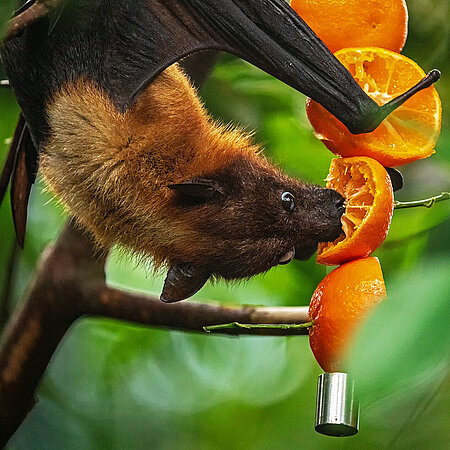Indian flying fox
Pteropus giganteus

- Family
- Pteropodidae
- Weight
- ♀ 600 – 900 g, ♂ 1.3 – 1.6 kg
- Habitat
- tropical and subtropical rainforests
Busy as a bee
As fruit and nectar eaters, Indian flying foxes make an important contribution to their ecosystem. They disperse a variety of seeds through their droppings and pollinate flowering plants as they forage for nectar. When nectaring on flowers with their long tongues, pollen gets stuck to their fur. The pollen is then carried from flower to flower, just like bees.

Don’t be afraid, I’m a vegetarian!
With a wingspan of up to 112 cm, the Indian flying fox is one of the largest bats in the world. It relies on its welldeveloped
sense of smell to navigate in the dark and uses it to find sweet-smelling nectar, pollen and ripe fruit. Unlike its insectivorous relatives, the microbats, flying foxes are vegetarians.
Flying foxes are nocturnal, during the day they hang upside in the treetops. They live in colonies of several hundred individuals.